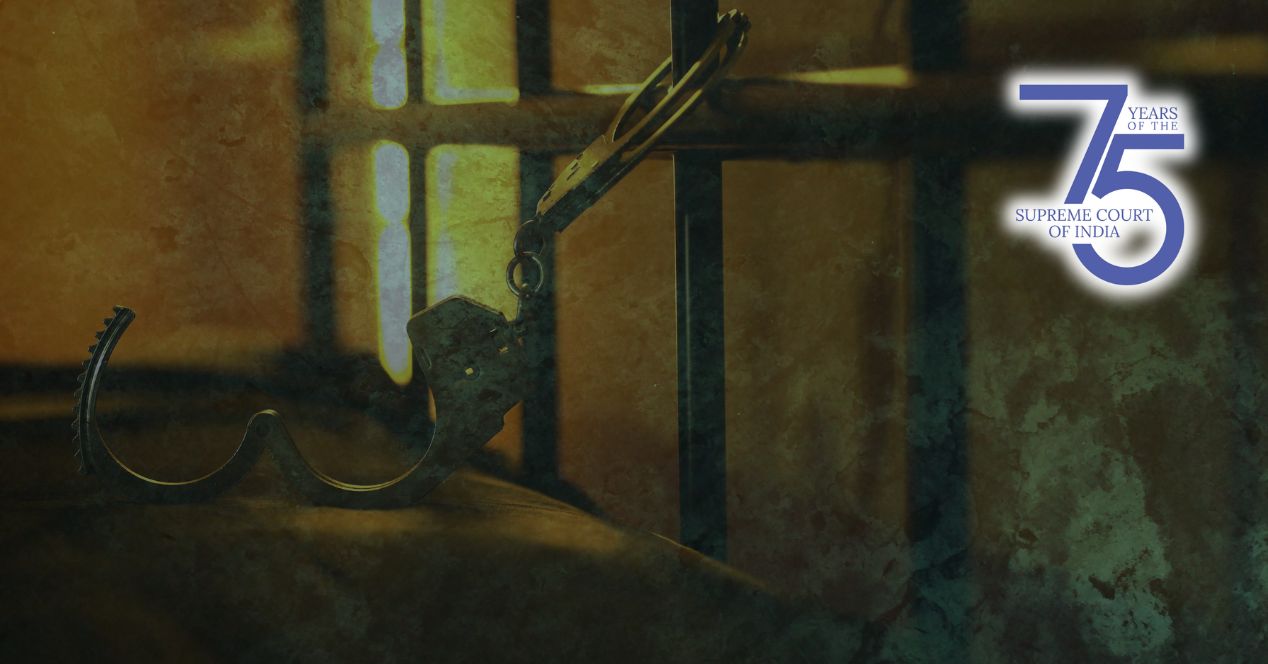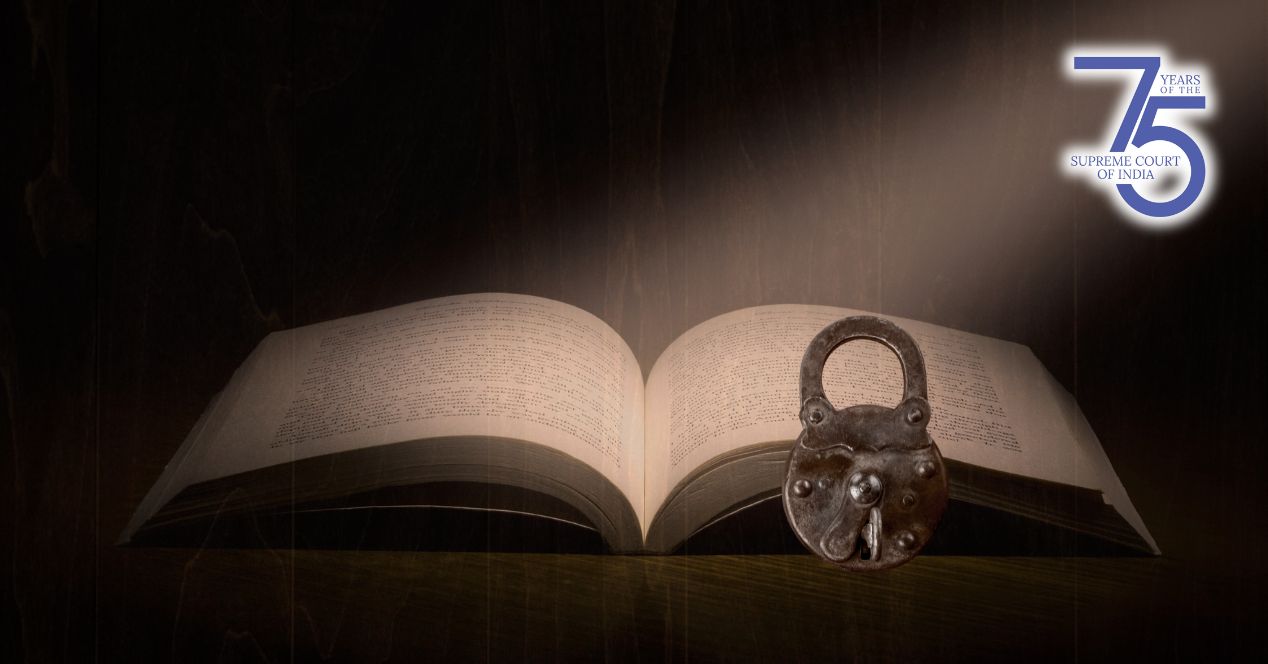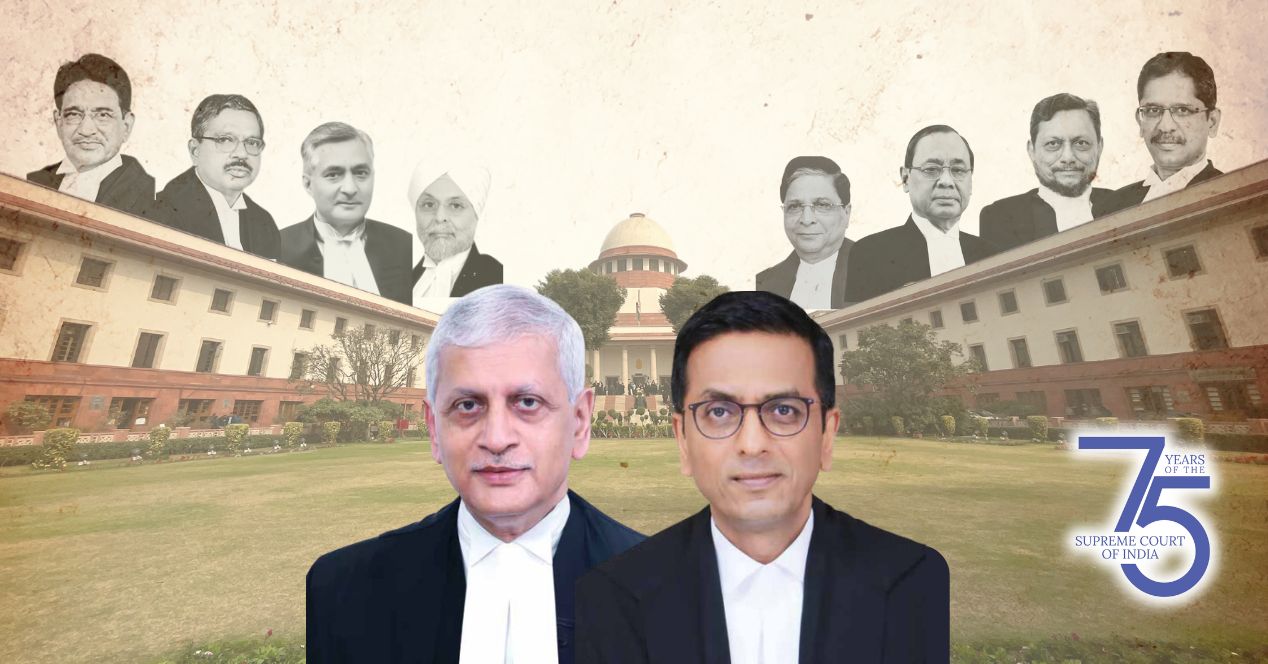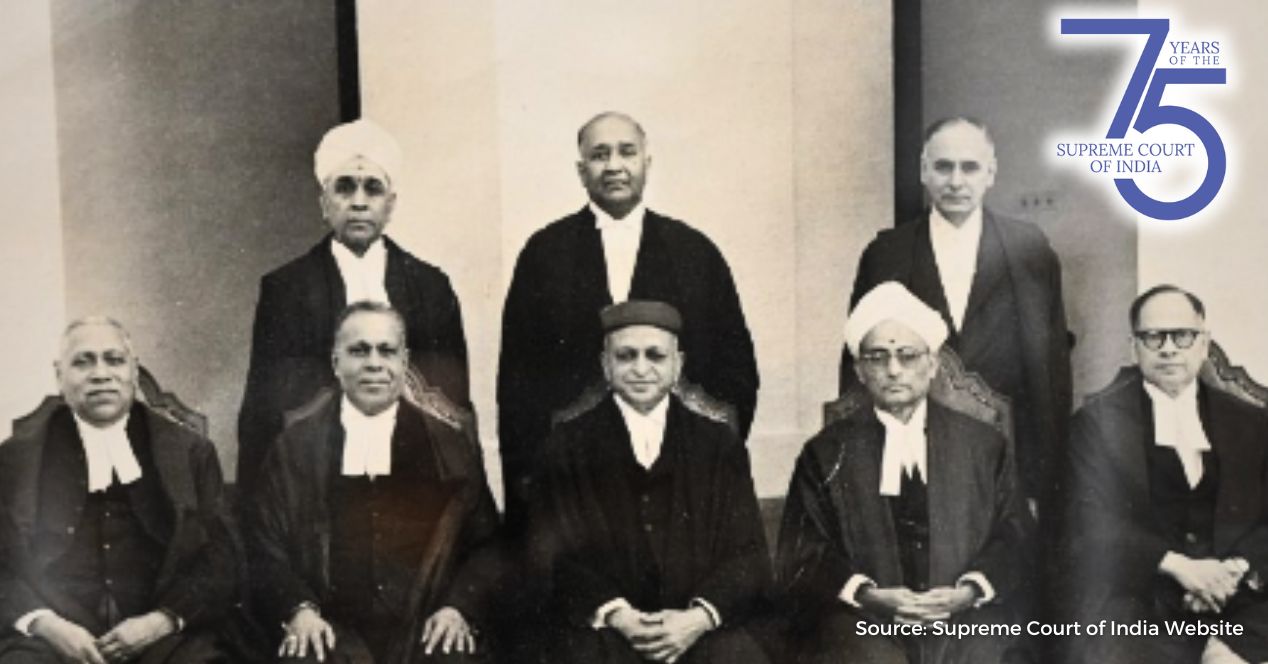The Supreme Court as protagonist in a ‘crip’ story: some plaudits, some anxieties
In its 75 years, the SC has struggled to accommodate those disabled who don’t fit the pre-decided rubrics of the neo-liberal nation-state
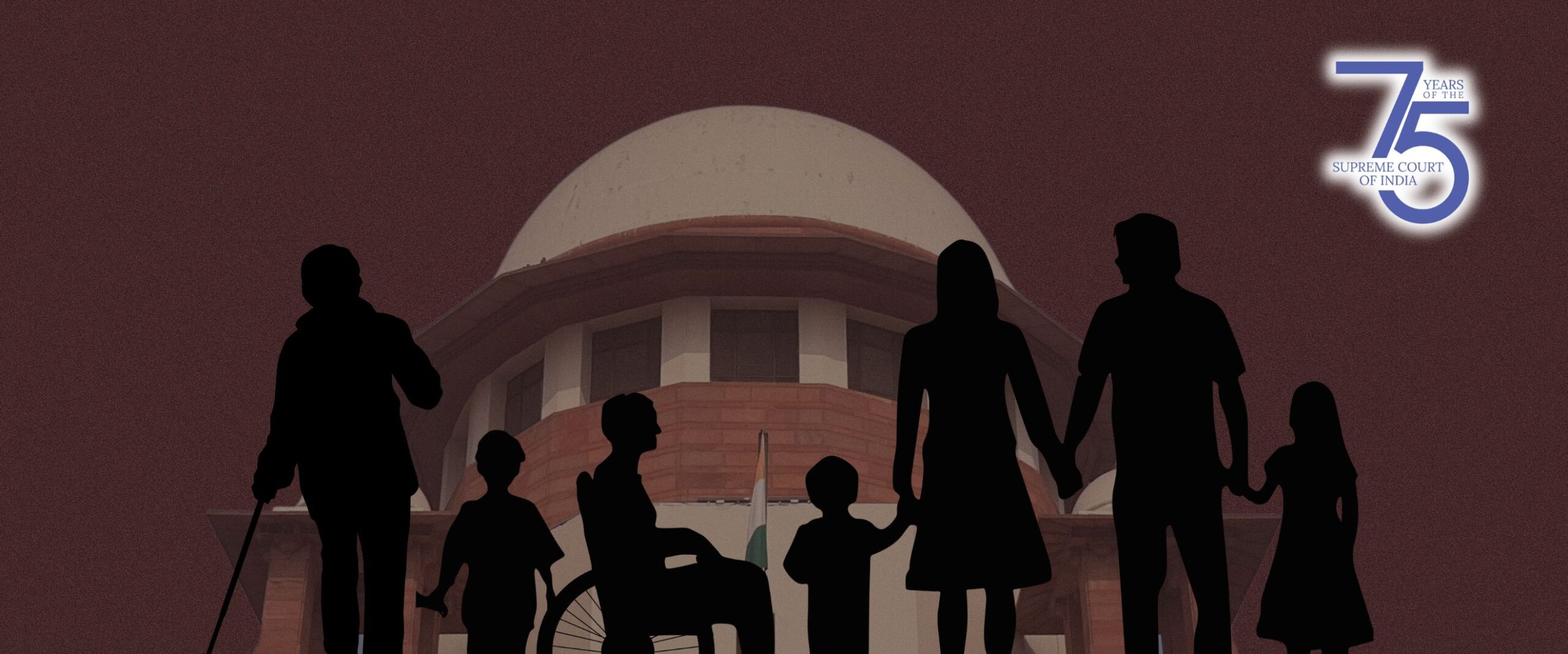
Writing about the Supreme Court’s contribution to disability jurisprudence is met with two problems: firstly, an abundance of hagiographic historiography in which the Court comes out as saviour and secondly, the lack of archives and documentation of vernacular, peripheral and non-Delhi-based disability justice movements. There is a significant contestation among scholars and chroniclers of India’s disability movement. These contestations must be understood to situate the Supreme Court’s role as an unlikely ‘protagonist’ in the story.
This article does not attempt to cover every disability-related case in the Supreme Court in the last 75 years. This attempt is relatively modest—to cover the broad impulses that have guided the Supreme Court’s jurisprudence on disability.
Anita Ghai takes 1981, the International Year of Disabled People, as the starting point of India’s disability movement. Nilika Mehrotra locates the emergence of India’s disability movement in the 1990s—the period was marked by lobbying for the Persons with Disabilities Act, 1995 and the declaration of the Asian and Pacific Decade of Disabled Persons in 1993.
Meenu Bhambhani presents a counterintuitive point when she challenges the categorisation of ‘sporadic’ attempts of ‘impairment-specific groups’ as a movement. She also identifies the starting point of the disability rights movement in the 1990s, with the formation of the Disabled Rights Group as a cross-disability advocacy group. On the point of origins, Jagdish Chander focuses on the movement of the ‘organized blind’ in the 1970s.
A different reading, however, emerges in a doctoral dissertation authored by Babui Bag in Bengali and titled ‘Paschim Banger Pratibandhi Manush: Prantikotar Nanadik (1947-2012)’ (‘Disability in West Bengal: Many Aspects of Marginality (1947-2012)’). Here, Bag traces the disability rights movement in undivided Bengal in 1946. He asserts that the first cross-disability organisation was the Paschim Bangya Rajya Pratibandhi Sammilani founded in 1985.
However, vernacular assertions on the origins of the disability movement in India remain petit récit and dominant readings of the disability rights movement take Delhi as the site where activism for progressive laws received visibility. Delhi has also become the primary location for securing disability rights through court judgments. In this metanarrative, the Supreme Court emerges as the protagonist, being the convenient forum for Delhi-based disability organisations.
‘Cripping’ the Constitution by PIL and civil appeals
The liberal consensus presents the Indian Constitution as an ‘inclusive’ document. However, it misses the point that several marginal groups did not have any representation in shaping it. Rohit De and Ornit Shani’s archival research shows that the disabled felt deeply about their testimonial erasure from Constitution-making.
The emergence of visible subaltern movements and a new vernacular was the new political reality of the 1970s. Anuj Bhuwania argues that the Supreme Court attempted to capture and mimic this new vernacularised political reality based on vectors of caste, region and class. Bhuwania writes that Public Interest Litigation (PIL) became a potent means of reaching out to those who live on the ‘margins of legality’. PIL also allowed constitutional courts to advance innovative interpretations and stretch their imagination to centre the poor in constitutional discourse. These interpretations continued in many civil appeals decided by the Supreme Court on questions of accessibility and reasonable accommodation. Here are some of the interpretations which opened the possibility of a ‘crip reading’ of the Constitution:
Fraternity as a bulwark against ableism
Gautam Bhatia’s The Transformative Constitution provides a fascinating insight into B.R. Ambedkar’s reading of fraternity. Bhatia highlights that Ambedkar believed that fraternity would ‘interrogate, undermine, and eventually break down the hierarchical social relations that had come to be treated as natural.’
In our constitutional reading, ableism is not perceived as a form of domination, hegemony or naturalised social hierarchy. Ableism in our deeply inequitable society, in the words of Robert McRuer, masquerades as a ‘nonidentity, as the natural order of things.’ Fiona Kumari Campbell argues that ableism presents a particular kind of self and body as perfect and fully human. In this conception, disability is cast as a diminished state. In Om Rathod v The Director General of Health Services (2024), the Supreme Court highlights the importance of fraternity, assuring the dignity of individuals and the unity and integrity of the nation. However, a more robust interpretation can be given to ‘fraternity’ in the context of dismantling the dominance of ableism if we were to extend Ambedkar’s vision.
Protection of the disabled as a ‘discrete and insular minority’
Mark Tushnet opines that the ‘discrete and insular minority’ jurisprudence developed by the US Supreme Court in United States v Carolene Products (1938) comes from New Deal jurisprudence, where economic regulations were left to the government even as there was a simultaneous assertion that aggressive judicial intervention is possible when a statute violates the Bill of Rights or is prejudiced against ‘insular and discrete’ minorities.
The use of ‘insular and discrete minority’ jurisprudence is prevalent across nations with liberal constitutionalism. In India, the ‘insular and discrete minority’ phrase is used for the disabled as a passing reference in Vikash Kumar v Union Public Service Commission (2021). However, I contend that this New Deal jurisprudence has shaped every Supreme Court judgment pertaining to accessibility and reasonable accommodation within the neo-liberal framework of the economy.
India entered its neo-liberal economic phase in the backdrop of the triumphalism of Francis Fukuyama’s ‘end of history’ project, in which the market economy and liberal democracy were presented as the end point of mankind’s ideological innovation. In this worldview, inclusion is achieved through the neo-liberal tolerance for depoliticised disability inclusionism within the framework of normative rights, obligations and citizenship.
Moreover, as Campbell points out, this minority model is dependent upon the state’s economic resources. As austerity measures, low social spending and epistemic valorisation of neo-liberal logic by court judgments as ‘economic democracy’ are becoming norms, this minority model will fail to serve those disabled who are excluded and marginalised from neo-liberalism. The model continues to treat disability as exceptional and enables the compulsory able-bodiedness of our mainstream constitutional discourse. We may need a better jurisprudence of disabled inclusion that suits our postcolonial situation.
Accessibility, barrier removal, disability portrayal and the Court
Rajive Raturi v Union of India (2024) is the finest example of the Supreme Court’s judicial imagination to ensure accessibility for Persons with Disabilities. This case arose from a writ petition filed in 2005 for meaningful access to public spaces for the disabled. Rajive Rathuri is noteworthy for the collaboration between experts and civil society to interrogate and deepen the understanding of accessibility.
As part of the proceedings, the Court directed the Centre for Disability Studies at NALSAR, Hyderabad to prepare a report. The report recorded first-person accounts of accessibility barriers and included insights based on surveys and expert interviews. The Court acknowledged that the lack of accessibility may exclude a person from contributing meaningfully to society. It also recognised accessibility as a human right and extended the question of accessibility in areas of love and desire, which are traditionally not seen as ‘disability issues’.
Nipun Malhotra v Sony Pictures India (2024) was an important intervention of the Court in the area of disability portrayal in cinema. The case made a nuanced distinction between ‘disability humour’ and ‘disabling humour’. Meenu Bhambhani points out that the questions of livelihood, education and rehabilitation are so pressing that questions of history and media portrayal have always been given secondary importance. This case exemplifies an emerging class of disabled that has economic resources and access to judicial tribunals and market forces to take up issues beyond the traditional ones.
The ghost of ‘ADM Jabalpur’ and the rupture in the linear progressive story
Merely mapping the progressive impulses presents a hagiographic narrative that erases the story of the late Professor G.N. Saibaba and the late Father Stan Swamy, two disabled individuals who suffered the worst form of state repression in recent times. The Indian Supreme Court has, in many cases, affirmatively reiterated the reading of ‘life’ in Munn v Illinois (1876). It was stated in Munn: “By the term ‘life’, as here used, something more is meant than mere animal existence.” Perhaps it was these reiterations in the post-Emergency period that made Upendra Baxi quip that “every activist judge in India is a linear descendant of Jaiprakash Narayan.”
Giorgio Agamben, in his celebrated work Homo Sacer makes a distinction between zoe and bios. While zoe refers to the ‘bare life’, bios refers to ‘life endowed with meaning and dignity’. The expansive interpretations of Article 21 attempt to invest dignity and meaning in the constitutional life of the citizen. However, the examples of Saibaba and Stan Swamy remain stark reminders of the failure of the Supreme Court to protect them and their dignity from state repression.
Agamben opines that the bare life of humans can be politicised by the sovereign state in its totalitarian avatar. Agamben writes about how the horror and humiliation of the concentration camps in Nazi Germany suppressed the consciousness and personality of the inmates. The cases of Saibaba and Stan Swamy are also stories of horror and humiliation, of the direct attacks on individual dignity enabled by the judicial system.
One of the spectacular examples of anti-liberty jurisprudence coming out of the Supreme Court in recent times was the infamous Saturday hearing by a bench of Justices Bela Trivedi and M.R. Shah. The bench gathered on what is ordinarily a court holiday to suspend the Bombay High Court order acquitting Saibaba. The ghost of ADM Jabalpur v Shivkant Shukla (1976) was resurrected again when the bench denied any relief to Prof Saibaba, who was 90 percent disabled. The bench remarked orally: “As far as terrorist activities are concerned, the brain plays a very important role…A brain for such activities is very dangerous.”
Conclusion
In Franz Kafka’s The Trial, there is a famous scene where a man repeatedly shows up at the ‘gates of law’ to seek admittance. Every time he receives the same reply from the gatekeeper: his entry is possible but not at the moment. Finally, the gatekeeper shuts the door. Positivist theories of law offer great importance to those who get to take internal and external points of view within a legal system. Who provides the normative validity to the system? Whose existence matters in the life of law?
While critiquing H.L.A Hart’s formulation of ‘internal’ and ‘external’ point of view, Margaret Davies points out that the protagonist of Hart’s thesis is a rational, able-bodied man. For marginalised communities, ‘adopting the normative inside’ is very difficult. The ‘otherness’ produced by marginality requires a constant negotiation with the legal system. The disabled community is negotiating with India’s constitutional framework to get into the normative inside of the law.
The disability rights movement increasingly relies on judicial activism to get admittance to law by seeking accessibility, barrier removal and human dignity. The Supreme Court, as the gatekeeper of law, allows admittance to the middle-class and the non-controversial disabled. However, the doors are kept tightly shut for political dissenters. This sums up, over the 75 years of its existence, the Supreme Court’s ambivalent understanding of anomalous embodiments of the disabled and their place in our constitutional framework.
Vijay K. Tiwari is an Assistant Professor (Law) at the West Bengal National University of Juridical Sciences, Kolkata. He can be reached at vijaykt@nujs.edu

